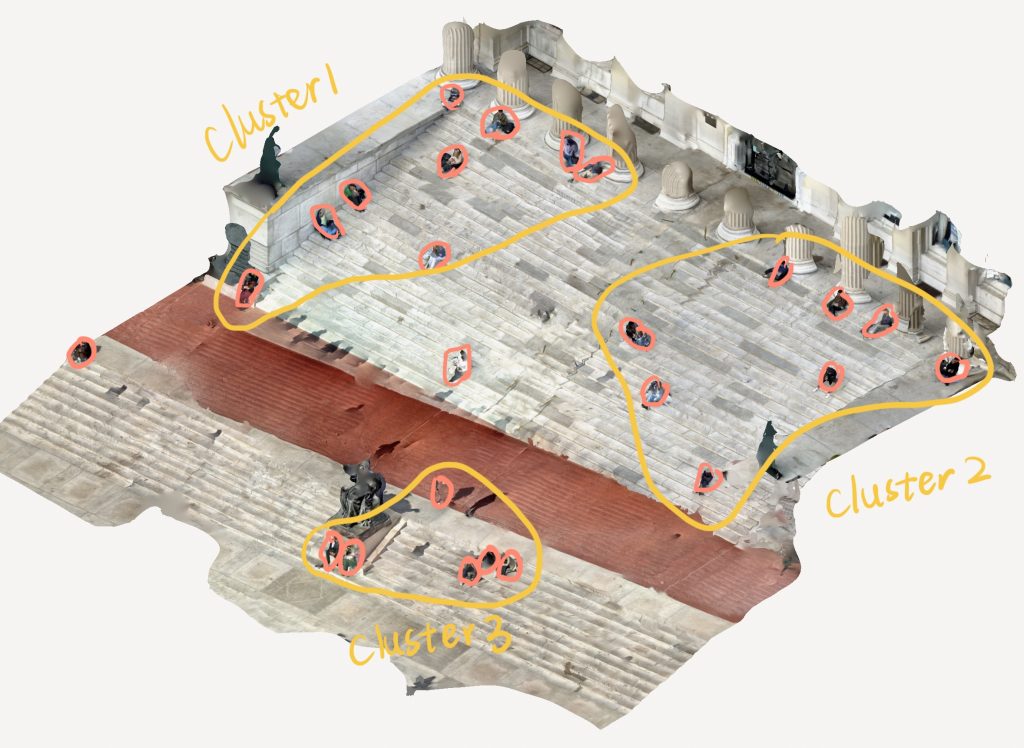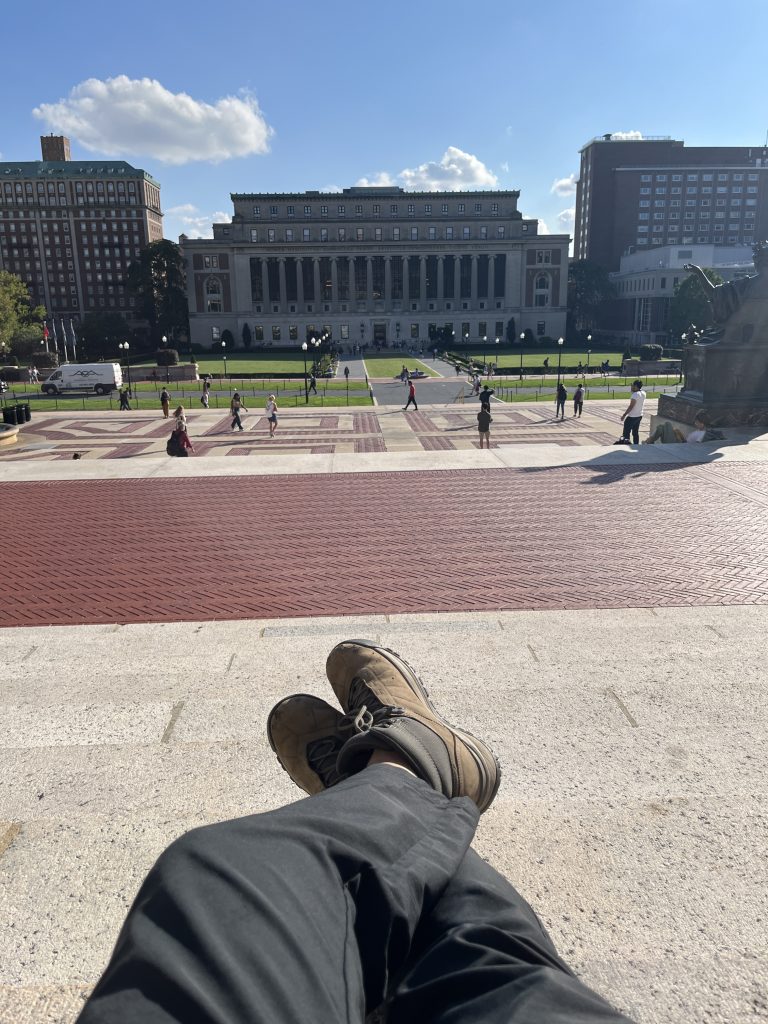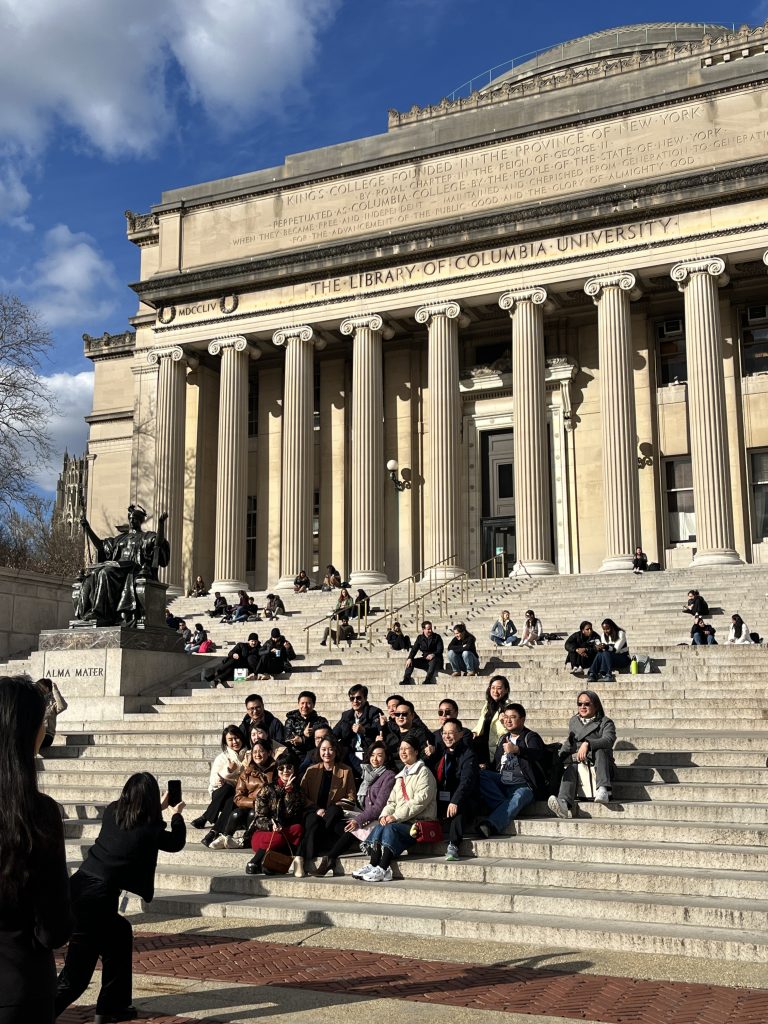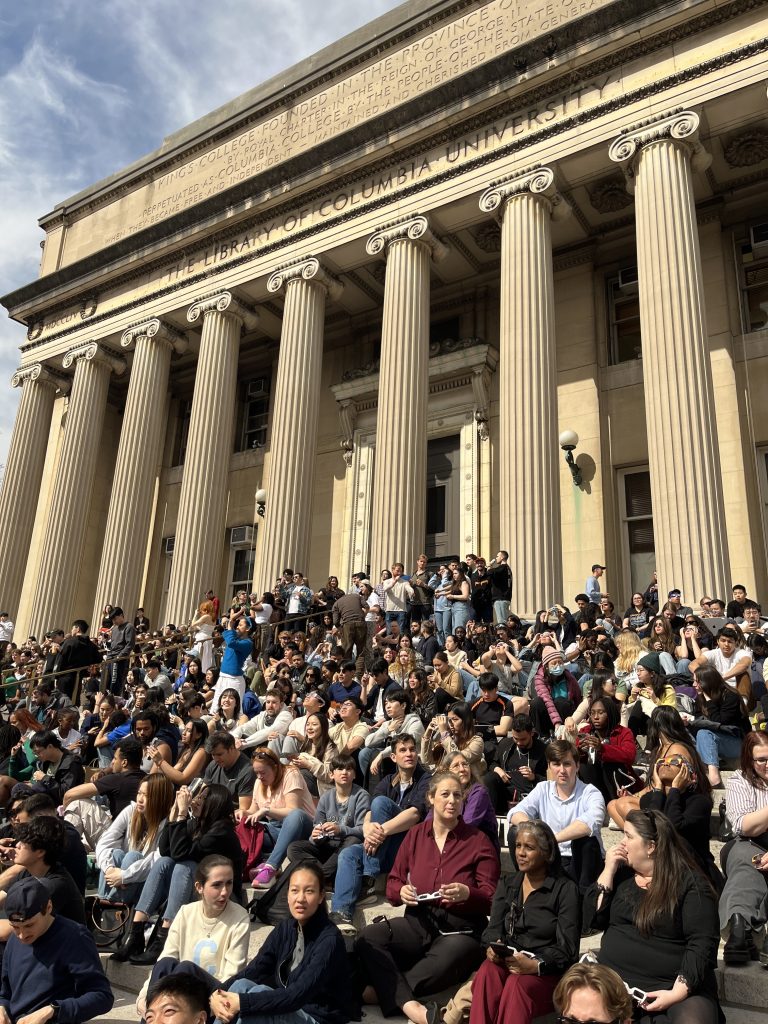
Location
The Low Steps of the Low Library at Columbia University serve as a central hub for campus life, offering a space where students, faculty, and visitors gather throughout the day.
Type of Interaction Observed:
Seating and Social Dynamics

Date of Observation:
Feburary 27, 2024
March 02, 2024
March 25, 2024
April 08, 2024

Qualitative Observations:
- Seating Patterns:
- Clustered Groups:
Groups of students naturally form clusters, often opting for the center or higher levels of the steps.- Cluster 1 (Center-Left): A group of five students sit close together, sharing snacks and discussing coursework. The distance between individuals is minimal, creating a compact, cozy atmosphere.
- Cluster 2 (Center-Right): Three friends sit at a moderate distance from each other, enough to allow for personal space but still close enough for conversation. This group attracts more people as the minutes pass, expanding to five members.
- Individuals and Pairs:
- Solitary Reader (Right Edge): An individual sits alone on the right side, maintaining a distance of at least 6 feet from the nearest group. They are focused on reading a book, occasionally glancing up at others passing by.
- Pair of Friends (Top Steps): Two friends sit side by side at the top of the steps, maintaining a distance of 2 feet between them, creating an intimate yet relaxed atmosphere.
- Clustered Groups:
- Distance and Privacy:
- Groups vs. Individuals:
Groups tend to sit closer together, often within a 1-foot distance between each person. This closeness fosters a sense of camaraderie and engagement. In contrast, individuals often maintain a 6-8 foot distance from the nearest person or group, valuing personal space. - Boundary Setting:
Invisible boundaries emerge between groups, marked by subtle behavioral cues like body orientation, gaze direction, and the placement of personal items such as backpacks or jackets.
- Groups vs. Individuals:
- Environmental Factors:
- Shade vs. Sunlight:
The few shaded spots available on the steps are highly coveted. A group of three friends manages to secure a shady area on the left side, while those seated in the sun are either reading with sunglasses or shifting occasionally to avoid direct sunlight. - Step Levels:
Higher step levels are preferred for their better vantage point, and individuals sitting at the very top enjoy a panoramic view of the campus.
- Shade vs. Sunlight:

Synthesis & Analysis:
- Seating Selection Criteria:
The choice of where to sit on the Low Steps is influenced by several factors:- Group Size: Larger groups require more space, leading them to sit centrally or on higher steps.
- Privacy Needs: Individuals and pairs often sit at the periphery or higher levels, seeking solitude or uninterrupted conversations.
- Environmental Comfort: Shade and the panoramic view from the top steps make these spots particularly desirable.
- Spatial Dynamics:
People naturally maintain a balance between sociability and privacy:- Groups vs. Individuals: Groups tend to be tightly packed, while individuals prioritize personal space.
- Proxemics in Action: People intuitively gauge the appropriate distance to sit from others, preserving a buffer zone between different social clusters.
- Cultural Resonance:
The Low Steps are a historic platform for exchange, and this resonates in the seating choices made:- Tradition of Assembly: Students embrace the steps as a venue for discussion, emulating the tradition of assembly that the Low Library symbolizes.
- Modern Adaptation: Despite being rooted in history, the steps adapt to contemporary needs, offering diverse spaces that cater to different social dynamics.
